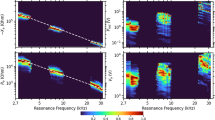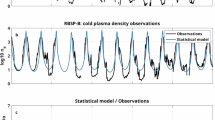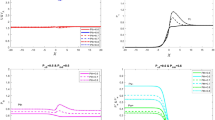Abstract
STUDY of the Van Allen belt may throw some light on some of the phenomena which occur in stars where plasma is trapped by strong magnetic fields. One problem which is relevant to astrophysics is the origin of the high energy trapped charged particles in the belt.
This is a preview of subscription content, access via your institution
Access options
Subscribe to this journal
Receive 51 print issues and online access
$199.00 per year
only $3.90 per issue
Buy this article
- Purchase on SpringerLink
- Instant access to full article PDF
Prices may be subject to local taxes which are calculated during checkout
Similar content being viewed by others
References
Gold, T., Nature, 218, 731 (1968); ibid., 221, 25 (1969).
Armstrong, T. P., and Krimigis, S. M., J. Geophys. Res., 73, 143 (1968).
Waddington, C. J., Scuola Internationale Enrico Fermi, Varenna, 135 (1963).
Jelley, J. V., Prog. Elementary Particles and Cosmic Rays, 9, 41 (John, Wiley, New York, 1967).
Author information
Authors and Affiliations
Rights and permissions
About this article
Cite this article
PIZZELLA, G. Emission of Cosmic Rays by a Dipole Magnetosphere. Nature 226, 434–435 (1970). https://doi.org/10.1038/226434a0
Received:
Issue date:
DOI: https://doi.org/10.1038/226434a0



